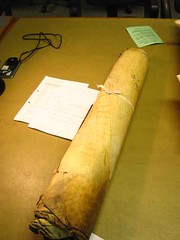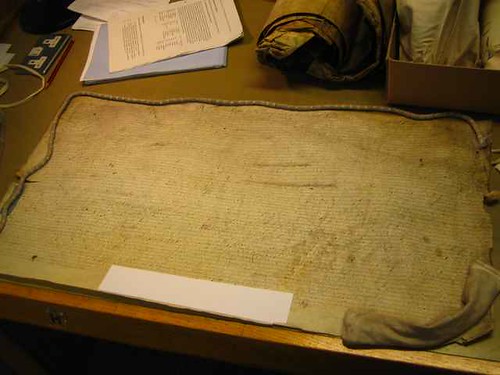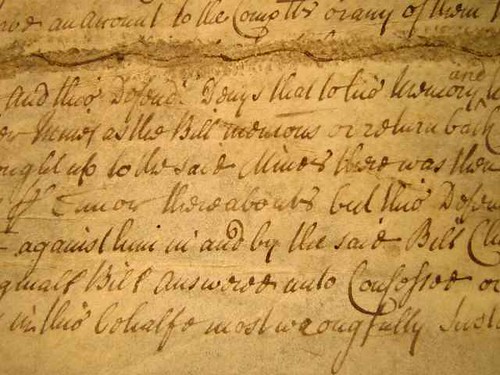Legal Perchment in C18

Legal perchments are often kept in a box being rolled up like this. It's quite big isn't it?? I don't really know why they are so big!

I took one out of the roll. The perchment are much thicker than our usual sheets of paper, and hard to bend. What is surprising about their way of using perchment in C18 is first that the lack of indentation. You see no space on the perchment!!

In a closer look, you may find some abbrebiations. Endings like 'tion' were often abbreviated. The lack of indentation and a number of abbrebiation were partly due to the relative scarecity of paper/perchment at the time. But what is more difficult about reading manuscripts is to tell apart letters with down strokes, such as n, m, i, and u. Added to this, their 't's don't usually look like a cross, and 'd' and 's' often look similar. Can you get any words? I couldn't at all at the beginning. But, alas, I can read some now! It took me hours to go through a few lines though.


3 Comments:
this reminds me of my friend/teacher Tom who found 17th century lute music exercise books in Leeds library. he showed me one of them when he last visited and i hadn't a clue why he thought that was a piece of treasure.
wow! they look very cool,
but I am not at all enthusiastic about deciphering them--my supervisor's superb handwriting is tricky enough...
>i hadn't a clue why he thought that was a >piece of treasure.
In my case, I dare say this is not a piece of treasure at all. I mean this one and other materials I am looking at don't have intrinsic value, which canons (like Shakespeare?) are sometimes supposed to have. So I really need to establish why these half-forgotten hand-writings and other things matter at all.
Post a Comment
<< Home